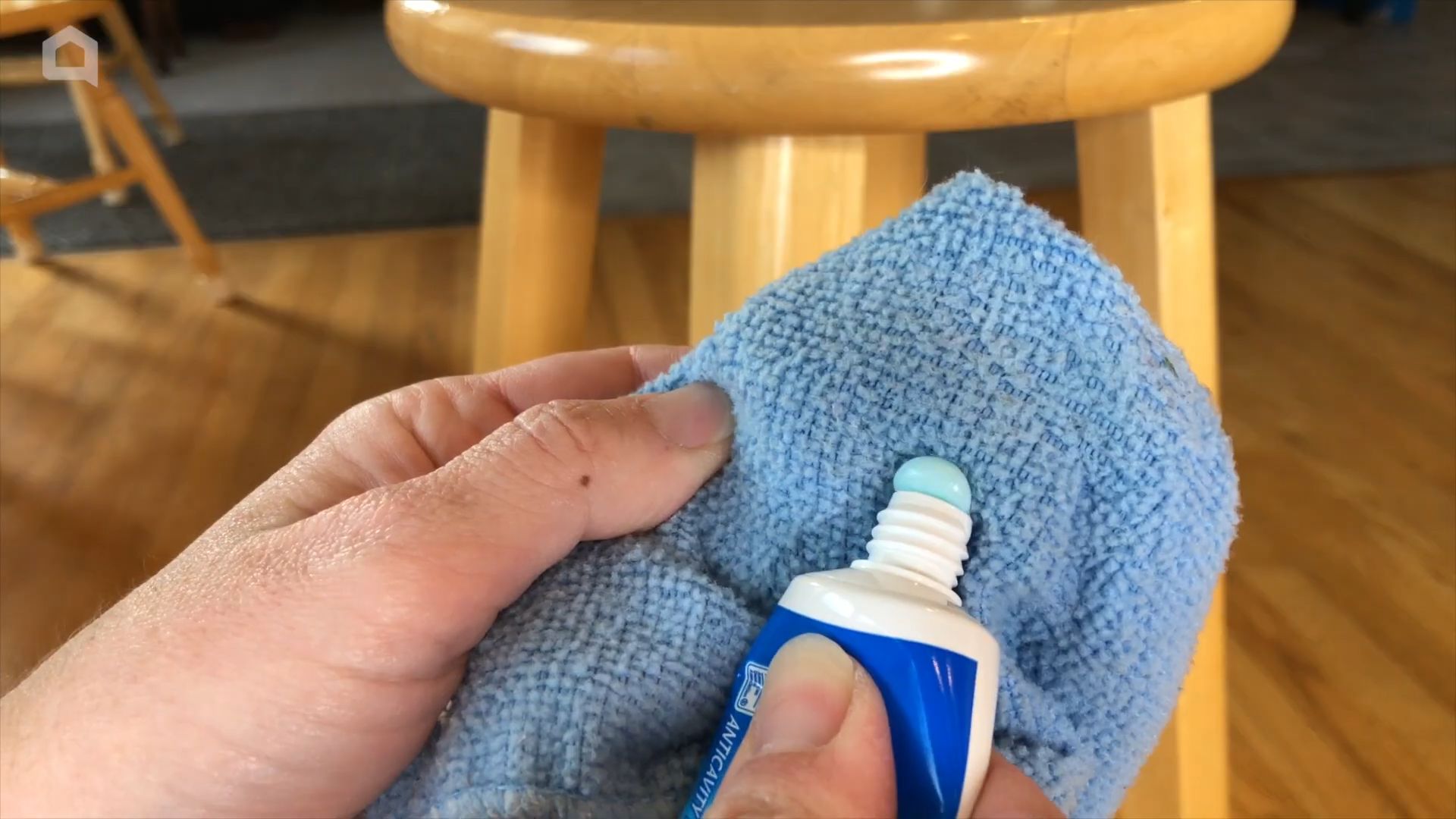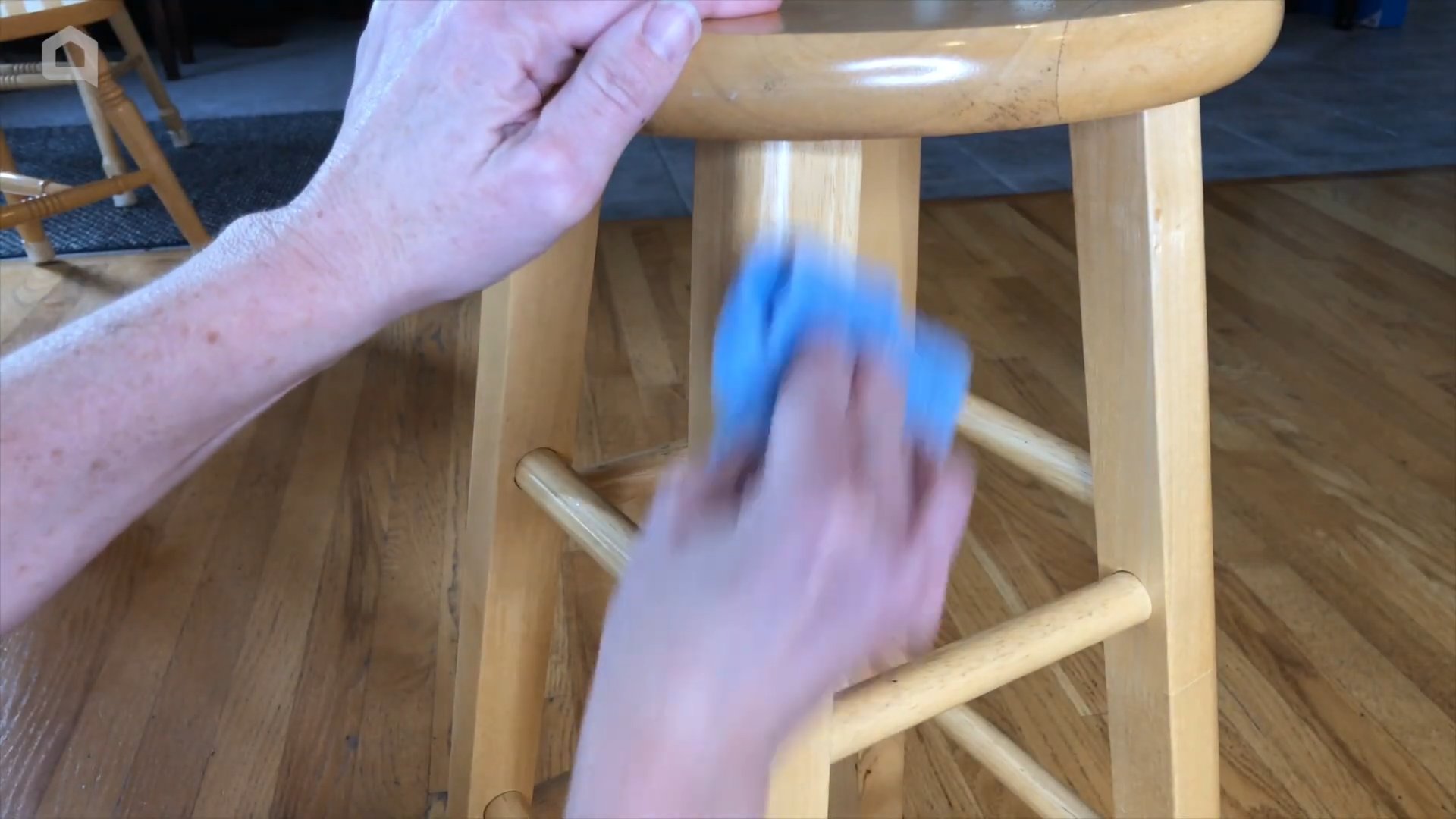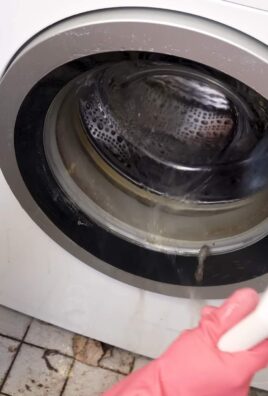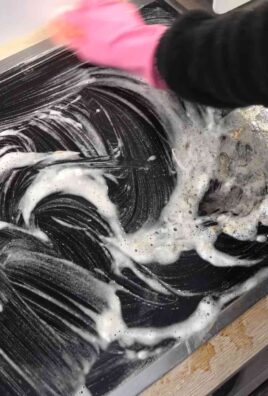Toothpaste hacks that work – who knew your humble tube of minty freshness held so much untapped potential beyond just keeping your pearly whites sparkling? I’m constantly amazed by the clever and unexpected uses people discover for everyday items, and toothpaste is definitely a star player in the DIY world.
For generations, toothpaste has been a staple in oral hygiene, but its cleaning and abrasive properties have been recognized and utilized for so much more. Think about it – our grandparents probably used it to polish silverware long before the internet made these tricks go viral! This isn’t just some fleeting trend; it’s a testament to resourcefulness and making the most of what you have.
But why should you care about toothpaste hacks that work? Well, let’s be honest, life gets messy! From stubborn stains on your clothes to tarnished jewelry and even minor household repairs, unexpected problems pop up all the time. Instead of rushing out to buy expensive specialty cleaners or tools, wouldn’t it be amazing to solve those little dilemmas with something you already have in your bathroom? I’m here to show you how to save time, money, and a whole lot of frustration with these simple, yet effective, toothpaste tricks. Get ready to be amazed!

Unlocking the Magic: Unexpected Toothpaste Hacks That Actually Work!
Hey there, fellow DIY enthusiasts! I’m about to spill the beans on some seriously cool toothpaste hacks that go way beyond just keeping your pearly whites sparkling. Get ready to be amazed at the versatility of this everyday item! I’ve personally tested these, and trust me, they’re game-changers.
The Ultimate Guide to Toothpaste Hacks
Before we dive into the nitty-gritty, let’s lay down some ground rules. Not all toothpaste is created equal!
* Choose wisely: Opt for a plain, white toothpaste. Gel toothpastes, whitening toothpastes with added ingredients, or those with fancy colors might not work as well for these hacks and could even cause damage. Think simple and classic!
* Spot test first: Especially when dealing with delicate surfaces like leather or electronics, always test a small, inconspicuous area first to ensure the toothpaste doesn’t cause discoloration or damage. Better safe than sorry!
* Gentle is key: Avoid excessive scrubbing. A little elbow grease is fine, but harsh scrubbing can scratch surfaces. Let the toothpaste do its work!
* Rinse thoroughly: Make sure to remove all traces of toothpaste after cleaning. Residue can attract dirt or leave a dull film.
* Don’t use on pearls: Toothpaste can damage the delicate surface of real pearls.
Cleaning Powerhouse: Toothpaste to the Rescue!
Toothpaste is a surprisingly effective cleaning agent, thanks to its mild abrasives and detergents. Here’s how to put it to work around your house:
1. Shining Silverware and Jewelry
Tarnished silverware and jewelry can look dull and lifeless. Toothpaste can bring back their shine without harsh chemicals.
1. Apply a small amount: Squeeze a pea-sized amount of toothpaste onto a soft cloth.
2. Gently rub: Rub the toothpaste onto the tarnished silver or jewelry, focusing on the areas with the most tarnish. Use gentle, circular motions.
3. Rinse thoroughly: Rinse the item under warm water, making sure to remove all traces of toothpaste.
4. Dry and buff: Dry the item with a clean, soft cloth. For extra shine, buff it gently.
Important Note: Avoid using toothpaste on delicate jewelry like opals, pearls, or items with soft stones, as it can scratch them.
2. Removing Water Rings from Wood Furniture
Those pesky water rings on your wooden furniture are the bane of every homeowner’s existence. But don’t despair! Toothpaste can help.
1. Apply a dab of toothpaste: Place a small dab of non-gel toothpaste directly onto the water ring.
2. Gently rub: Using a soft cloth, gently rub the toothpaste into the water ring in a circular motion. Be careful not to apply too much pressure.
3. Wipe clean: Wipe away the toothpaste with a damp cloth.
4. Dry and polish: Dry the area with a clean, dry cloth. You may want to apply a furniture polish to restore the shine.
Pro Tip: This works best on newer water rings. Older, more stubborn rings may require multiple applications or a professional furniture restorer.
3. Cleaning Chrome Fixtures
Chrome fixtures in your bathroom and kitchen can easily become dull and covered in water spots. Toothpaste can restore their shine.
1. Apply toothpaste: Apply a small amount of toothpaste to a soft cloth or directly onto the chrome fixture.
2. Rub gently: Rub the toothpaste onto the fixture, focusing on areas with water spots or grime.
3. Rinse thoroughly: Rinse the fixture with water, making sure to remove all traces of toothpaste.
4. Dry and buff: Dry the fixture with a clean, dry cloth. Buff to a shine.
Bonus Tip: Toothpaste can also help remove soap scum from shower doors and tiles.
4. Erasing Scuff Marks from Shoes
Scuff marks on your shoes can make them look old and worn. Toothpaste can help erase those marks and restore your shoes to their former glory.
1. Apply toothpaste: Apply a small amount of toothpaste to a soft cloth or an old toothbrush.
2. Rub gently: Gently rub the toothpaste onto the scuff marks in a circular motion.
3. Wipe clean: Wipe away the toothpaste with a damp cloth.
4. Dry and condition: Dry the shoes with a clean, dry cloth. If you’re cleaning leather shoes, apply a leather conditioner to keep them supple.
Important Note: This works best on leather or synthetic leather shoes. Avoid using toothpaste on delicate fabrics like suede or nubuck.
5. Cleaning Your Iron
A dirty iron can leave marks on your clothes. Toothpaste can help clean the soleplate and remove any residue.
1. Make sure the iron is cool and unplugged: This is crucial for safety!
2. Apply toothpaste: Apply a small amount of toothpaste to the soleplate of the iron.
3. Rub gently: Rub the toothpaste onto the soleplate with a soft cloth or an old toothbrush. Focus on areas with burnt-on residue.
4. Wipe clean: Wipe away the toothpaste with a damp cloth.
5. Fill the water reservoir and steam: Fill the iron’s water reservoir and turn it on to the steam setting. Steam the iron over an old towel to remove any remaining residue from the steam vents.
Safety First: Always unplug your iron and let it cool completely before cleaning it.
Beyond Cleaning: Other Surprising Toothpaste Uses
Toothpaste isn’t just for cleaning! Here are some other surprising ways you can use it:
6. Defogging Bathroom Mirrors
Tired of foggy bathroom mirrors after a hot shower? Toothpaste can help!
1. Apply a thin layer: Apply a thin layer of toothpaste to the mirror.
2. Wipe clean: Wipe away the toothpaste with a clean, damp cloth.
3. Buff: Buff the mirror with a dry cloth to remove any streaks.
The Result: A fog-free mirror that will stay clear even after the hottest showers!
7. Soothing Insect Bites and Minor Burns
Toothpaste can provide temporary relief from the itching and pain of insect bites and minor burns.
1. Apply a small amount: Apply a small amount of toothpaste directly to the insect bite or minor burn.
2. Let it dry: Let the toothpaste dry completely.
3. Rinse (optional): You can rinse the toothpaste off after a few hours, or leave it on overnight.
How it works: The menthol in toothpaste can have a cooling and soothing effect.
Important Note: This is only for minor burns. For serious burns, seek medical attention immediately.
8. Removing Crayon Marks from Walls
Kids love to express their creativity, but sometimes that creativity ends up on your walls in the form of crayon marks. Toothpaste to the rescue!
1. Apply toothpaste: Apply a small amount of toothpaste to a soft cloth.
2. Gently rub: Gently rub the toothpaste onto the crayon marks in a circular motion.
3. Wipe clean: Wipe away the toothpaste with a damp cloth.
Pro Tip: Test a small, inconspicuous area first to make sure the toothpaste doesn’t damage the paint.
9. Temporary Blemish Treatment
While not a long-term solution, toothpaste can help dry out blemishes overnight.
1. Apply a small amount: Apply a small dab of toothpaste directly to the blemish.
2. Leave it on overnight: Leave the toothpaste on overnight.
3. Rinse in the morning: Rinse the toothpaste off in the morning.
Important Note: This works best on blemishes that are already inflamed. Avoid using toothpaste on open wounds or sensitive skin. Also, don’t use whitening toothpaste, as it can irritate the skin.
10. Cleaning Headlights
Cloudy headlights can reduce visibility and make your car look older than it is. Toothpaste can help restore their clarity.
1. Tape off surrounding areas: Use painter’s tape to protect the paint around your headlights.
2. Apply toothpaste: Apply a generous amount of toothpaste to the headlight.
3. Rub vigorously: Rub the toothpaste onto the headlight with a damp cloth or sponge. Use firm, circular motions.
4. Rinse thoroughly: Rinse the headlight with water, making sure to remove all traces of toothpaste.
5. Dry and buff: Dry the headlight with a clean, dry cloth. Buff to a shine.
Pro Tip: For best results, use a polishing compound after cleaning with toothpaste.
So there you have it! Ten amazing toothpaste hacks that will make your life easier and save you money. Who knew this humble tube of paste could be so versatile? Now go forth and experiment! I’m

Conclusion
So, there you have it! These toothpaste hacks aren’t just quirky internet trends; they’re genuinely effective solutions to everyday problems. From shining your jewelry to removing stubborn stains, the versatility of this humble tube is truly remarkable. We’ve explored how toothpaste hacks can simplify your life and save you money, all while utilizing a product you likely already have in your bathroom.
But why should you try these hacks? Because they work! They’re quick, easy, and require minimal effort. Imagine effortlessly restoring the sparkle to your diamond ring or banishing those unsightly water rings from your wooden furniture. Think of the satisfaction of removing a crayon masterpiece from your painted walls without damaging the paint. These are just a few of the tangible benefits that await you when you embrace the power of toothpaste beyond just oral hygiene.
Don’t be afraid to experiment! While we’ve provided specific instructions for each hack, feel free to adapt them to your unique needs and circumstances. For instance, if you’re dealing with a particularly stubborn stain on your clothing, you might try letting the toothpaste sit for a longer period before rinsing. Or, if you’re cleaning delicate jewelry, consider using a soft-bristled toothbrush to avoid scratching the surface.
Here are a few variations to consider:
* **For whitening shoes:** Instead of using regular toothpaste, try a whitening toothpaste for an extra boost. Be sure to test it on a small, inconspicuous area first to ensure it doesn’t discolor the material.
* **For removing scuff marks from leather:** Use a small amount of toothpaste and gently rub it in with a soft cloth. Follow up with a leather conditioner to keep the leather supple and prevent it from drying out.
* **For cleaning chrome fixtures:** Mix toothpaste with a little baking soda for an extra abrasive cleaning power. This will help remove stubborn water spots and grime.
* **For defogging bathroom mirrors:** Apply a thin layer of toothpaste to the mirror, let it dry completely, and then wipe it off with a clean, dry cloth. This will create a temporary barrier that prevents fog from forming.
We’re confident that once you try these toothpaste hacks, you’ll be amazed by the results. They’re a testament to the fact that sometimes the simplest solutions are the most effective. So, grab a tube of toothpaste and get ready to transform your home and your life!
We’re eager to hear about your experiences with these toothpaste hacks. Did you discover a new use for toothpaste that we haven’t mentioned? Did you find a particular hack to be especially helpful? Share your stories, tips, and tricks in the comments below! Your feedback will not only help us improve our content but also inspire other readers to explore the endless possibilities of toothpaste. Let’s create a community of toothpaste enthusiasts who are dedicated to finding innovative and practical ways to use this everyday essential. Don’t hesitate to share before and after photos – we’d love to see the amazing transformations you’ve achieved!
Frequently Asked Questions (FAQs)
What kind of toothpaste should I use for these hacks?
Generally, plain white toothpaste (not gel) works best for most of these hacks. Avoid using heavily colored or heavily abrasive toothpastes, as they may stain or damage certain surfaces. For whitening applications, whitening toothpaste can be used, but always test in an inconspicuous area first. Gel toothpastes are less effective for cleaning and stain removal due to their different composition.
Will toothpaste damage delicate surfaces like jewelry or electronics?
It’s crucial to exercise caution when using toothpaste on delicate surfaces. Always test a small, hidden area first to ensure it doesn’t cause any damage or discoloration. Use a soft cloth or brush and apply gentle pressure. Avoid using abrasive toothpastes on delicate items. For electronics, ensure no moisture enters any openings. Wipe away all residue thoroughly.
Can I use toothpaste to remove scratches from my phone screen?
While some people claim toothpaste can remove minor scratches from phone screens, it’s generally not recommended. Toothpaste is abrasive and can potentially worsen the scratches or damage the screen’s coating. There are specialized screen repair kits available that are designed for this purpose and are a safer option. If you choose to try toothpaste, proceed with extreme caution and use a very small amount of non-gel toothpaste.
How long should I leave the toothpaste on a stain before rinsing?
The amount of time you leave the toothpaste on a stain depends on the severity of the stain and the surface you’re cleaning. For light stains, a few minutes may be sufficient. For more stubborn stains, you can leave it on for up to 30 minutes. Always check the area periodically to ensure the toothpaste isn’t causing any damage.
Is it safe to use toothpaste on my skin?
While toothpaste is generally safe for short-term contact with skin, it’s not intended for prolonged use or as a skincare product. Some people use toothpaste as a spot treatment for acne, but this can be drying and irritating, especially for sensitive skin. There are dedicated acne treatments that are more effective and less likely to cause adverse reactions. If you experience any irritation, discontinue use immediately.
Can I use expired toothpaste for these hacks?
Expired toothpaste may not be as effective as fresh toothpaste, but it can still be used for many of these hacks. The active ingredients in toothpaste may degrade over time, but the abrasive properties will still be present. However, if the toothpaste has become dried out or hardened, it may not be suitable for use.
What are some other unexpected uses for toothpaste?
Besides the hacks mentioned in the article, toothpaste can also be used to:
* Remove tarnish from silver.
* Clean piano keys.
* Remove crayon marks from walls.
* Polish golf clubs.
* Clean white sneakers.
* Remove coffee stains from mugs.
What if the toothpaste hack doesn’t work?
If a toothpaste hack doesn’t work, don’t be discouraged! Try repeating the process or using a slightly different technique. You can also try using a different type of toothpaste or combining it with other cleaning agents, such as baking soda or vinegar. If all else fails, there are always specialized cleaning products available that are designed for specific tasks.
Are there any surfaces I should avoid using toothpaste on?
Avoid using toothpaste on porous surfaces, such as unsealed wood or natural stone, as it can be difficult to remove and may cause staining. Also, avoid using toothpaste on delicate fabrics or surfaces that are easily scratched. Always test in an inconspicuous area first to ensure it doesn’t cause any damage.
How can I share my toothpaste hack success stories?
We encourage you to share your toothpaste hack success stories in the comments section below the article. You can also share your experiences on social media using relevant hashtags, such as #toothpastehacks, #DIYcleaning, or #lifehacks. We’d love to see your before and after photos and hear about any tips or tricks you’ve discovered. Your feedback will help us and other readers learn even more about the amazing versatility of toothpaste!




Leave a Comment